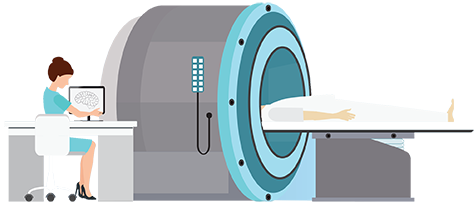

The x-ray technician can expect a variety of different working circumstances and must be able to work well with people and under stress and pressure. The use of visual aides to find problems in the body is an indispensable part of the process for doctors, dentists, radiologists, and physician’s to clearly understand the condition of their patient.
Calm, professional demeanor, patience, and compassion are all very important traits to possess as an X-Ray Tech. Many X-ray Techs report that one of the hardest parts of their job is to keep a calm and positive poise when they see something that concerns them. This is where a professional attitude about the job becomes very important. When a patient comes in for imaging, they arrive with anxieties and often think the worst. For this reason, strength of character and compassion are a must to be in an X-ray job role.
The one thing an X-ray Technician cannot do is to discuss findings of an x-ray with a patient. Sometimes a skilled X-ray Technician can spot potential problems on the images but still must not discuss them. Maintaining a professional attitude and addressing the concerns of clients without jumping to premature diagnosis conversations is a challenge for some. Instead, the X-ray Technician will tell them when they will be notified by a Radiologist or their doctor, which may take several days. If an emergency problem is spotted a Radiologist will be notified immediately and it will become a priority of the radiology lab. Respecting the proper protocols of communication is a must in the medical imaging field.
Another challenge that is reported is dealing with sick, high anxiety, or uncooperative patients. Some patients may be uncooperative or unable to sit, stand, or lie in certain positions due to illness ,injury, or pain. The X-ray Technician must be able to keep calm, helpful and compassionate at all times while also ensuring that the best quality image is obtained.
There has been an increasing trend to get X-Ray Technicians cross-trained to do CT scans, for example. The reason for this is that the technology is similar and many physicians prefer more detailed images to pin point problems. Also, it may be determined that after getting an x-ray, that a more detailed image is needed for proper diagnoses. In this case, the same worker could perform the CT scan or MRI.
To learn more about the many branches of specialization in radiology, check our both our radiology specializations page and our radiology certificate’s page. You will find information to get your acquainted with the technology and programs available.
As an x-ray technician, you will support the radiology team within a hospital, physician’s office, or medical imaging facility. An X-Ray Technician is a trained health-care worker that uses x-ray equipment to take pictures of the inside of the body so that conditions, diseases, or injury can be visualized and diagnosed.Job duties include:
The usual procedural steps to performing an x-ray consists of removing any jewelery and clothing which is replaced by a hospital gown. Clothing and jewelery might interfere with the exposure of the body area being examined. Then the patient is carefully positioned either laying, sitting, or standing,depending on the area of the body to be x-rayed between the x-ray machine and a cassette containing the x-ray film or specialized image plate. Any body part not being x-rayed will be covered with a lead apron or shield to avoid any further exposure of the x-rays. The x-ray beam is focused on the area to be photographed while the patient is to be very still so as not to blurr the image being taken. The technologist will stand behind a protective window and the image is taken. Various x-rays may be taken at different angles depending on the body part under study, such as the front and side view during a chest x-ray.